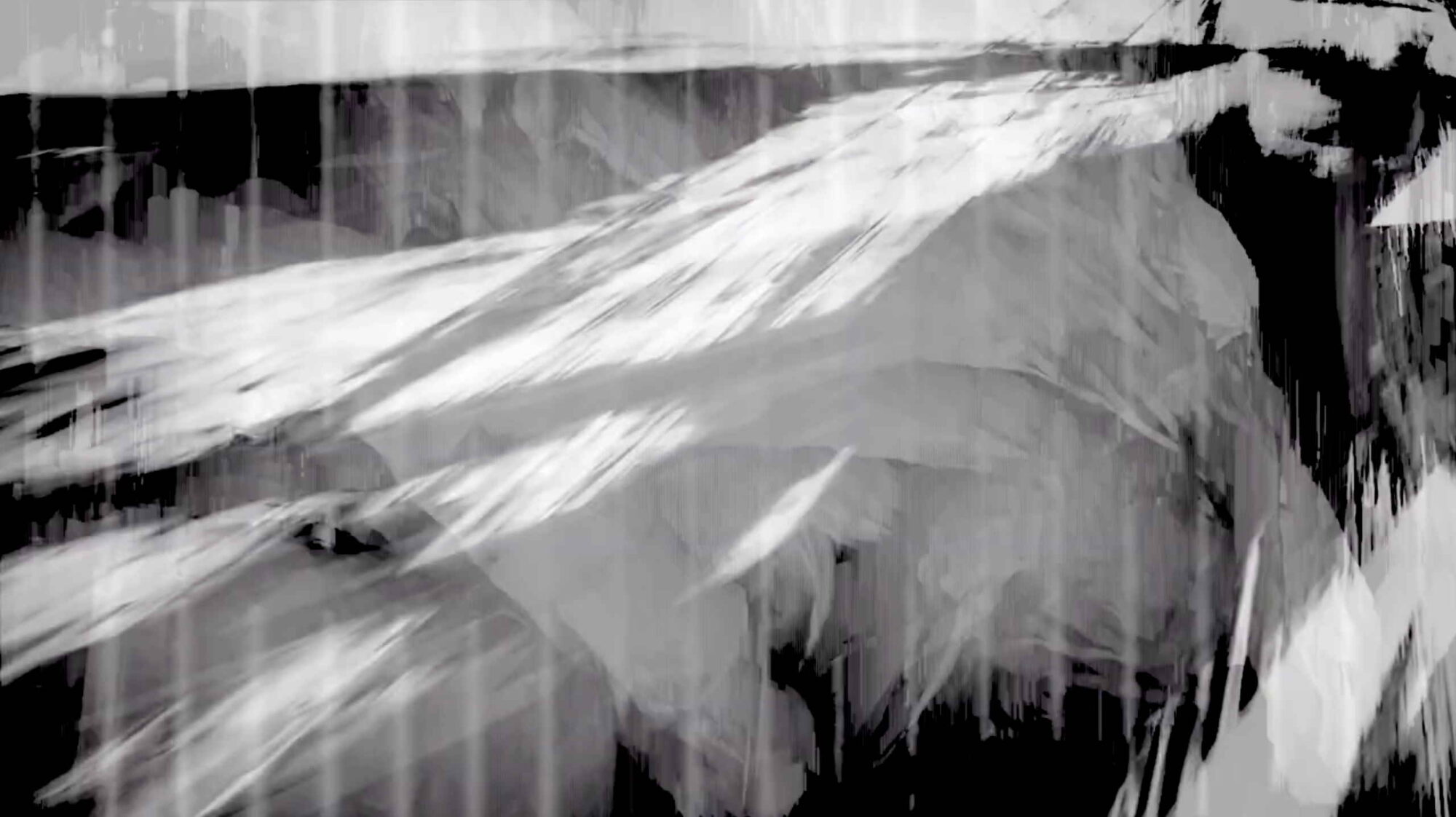with accordion / electronics @ ton.not not.ton exhibition, Kunsthalle Münster, 5.5.2023: https://www.kunsthallemuenster.de/de/programm/ton-not-not-ton-lisa-alvarado-samuel-beckett-gavsb/
deutsche Version dieses Posts hier
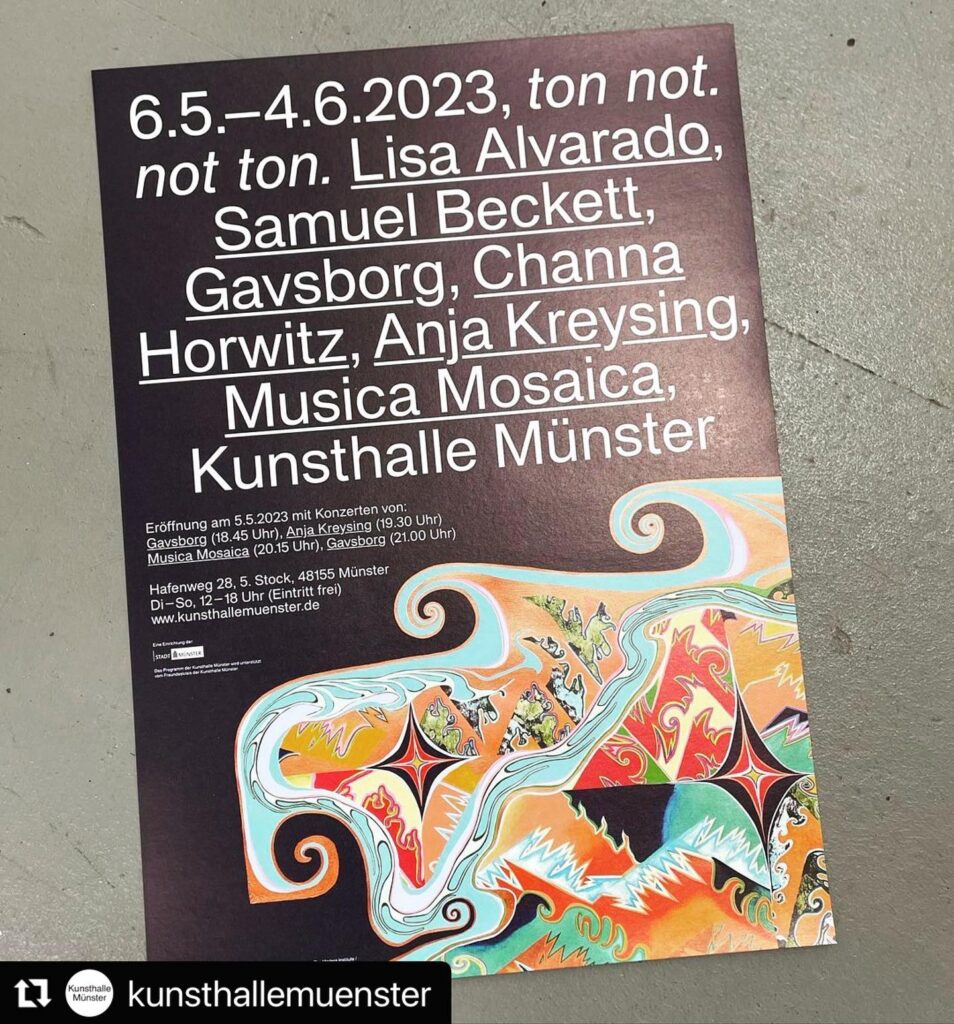
„Concert, performance, exhibition: ton not. not ton is devoted to the sound of things—sound emerging in the form of acoustic interventions, in objects arranged within the space and in one’s own imagination. It is all about the infusion of visual art with music. This second edition focuses on textures, frequencies, structures, colours, patterns and movement. Likewise, the score or choreography is considered as a formative and visual instrument. ton not. not ton examines the way in which sound articulates motion, spaces, dynamics and, above all, time. As in the musical contributions, rhythm is also inherent in the works of visual art, giving them a performativity of their own.
With Lisa Alvarado, Samuel Beckett, Gavsborg, Channa Horwitz, Anja Kreysing and Musica Mosaica, the second edition of ton not. not ton also compiles contributions by both visual artists and musicians, bringing together those who operate at the boundaries of their respective fields. “
„The sound artist and accordionist Anja Kreysing will perform an interpretation of the works Sonakinatographies from the American artist Chana Horwitz. Since the late 1960s, Horwitz has also used a series of drawings, which she called Sonakinatographies—a compound of the Greek words for “sound”, “motion” and “notation”—as choreographic source material for performances. Her pieces stretch the genre boundaries between dance, performance and visual art. From 1968 until shortly before her death, the artist had worked on countless variations of the 23 different compositions in the series. Each of these drawings can be interpreted musically or choreographically and enacted as a concert, performance or spatial installation. Kreysing will use her computerized accordion to play the scores. “
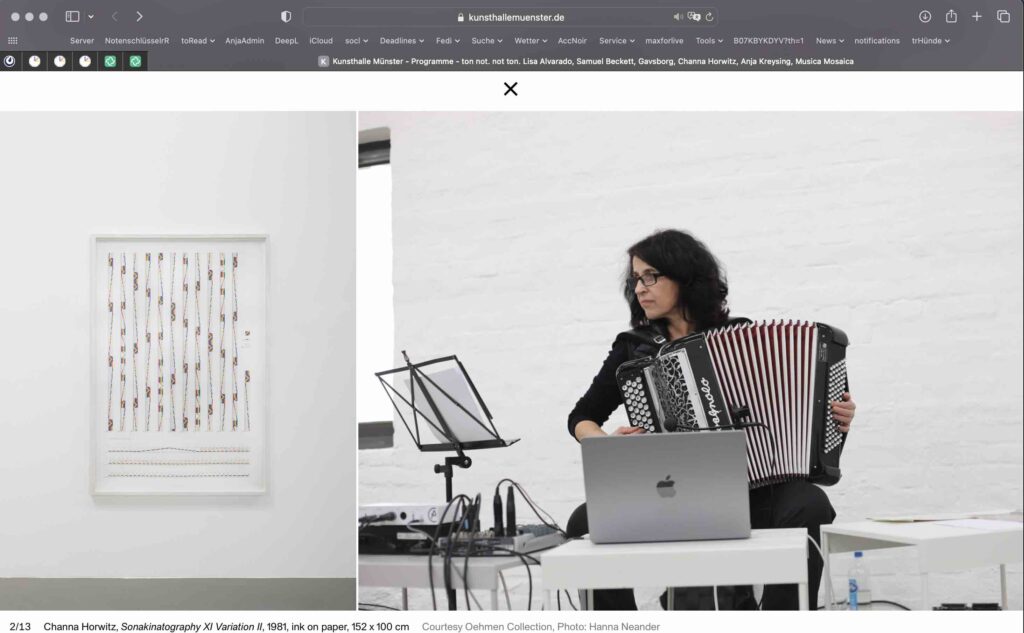
photos Sonakinatographies: Hanna Leander, photo Anja: Florian Glaubitz
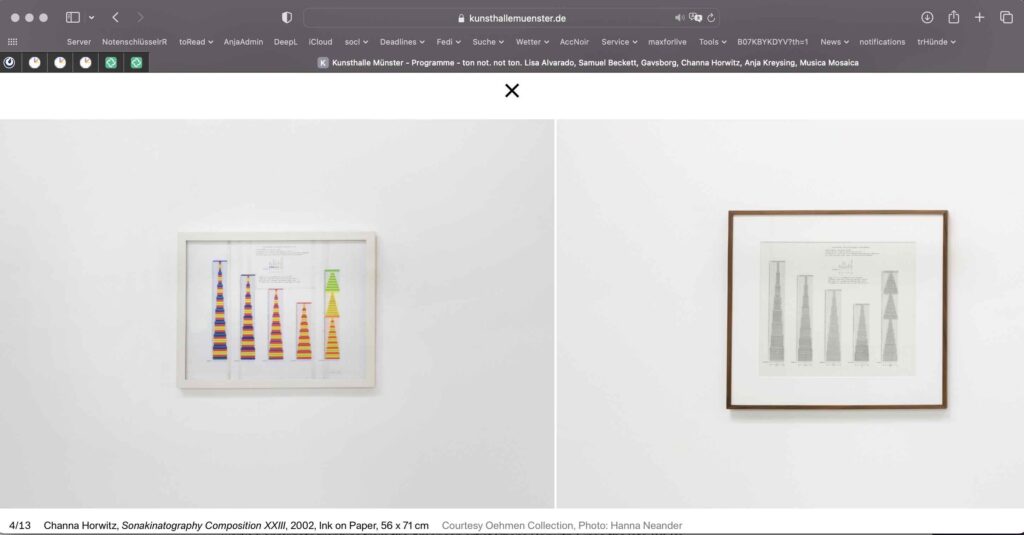
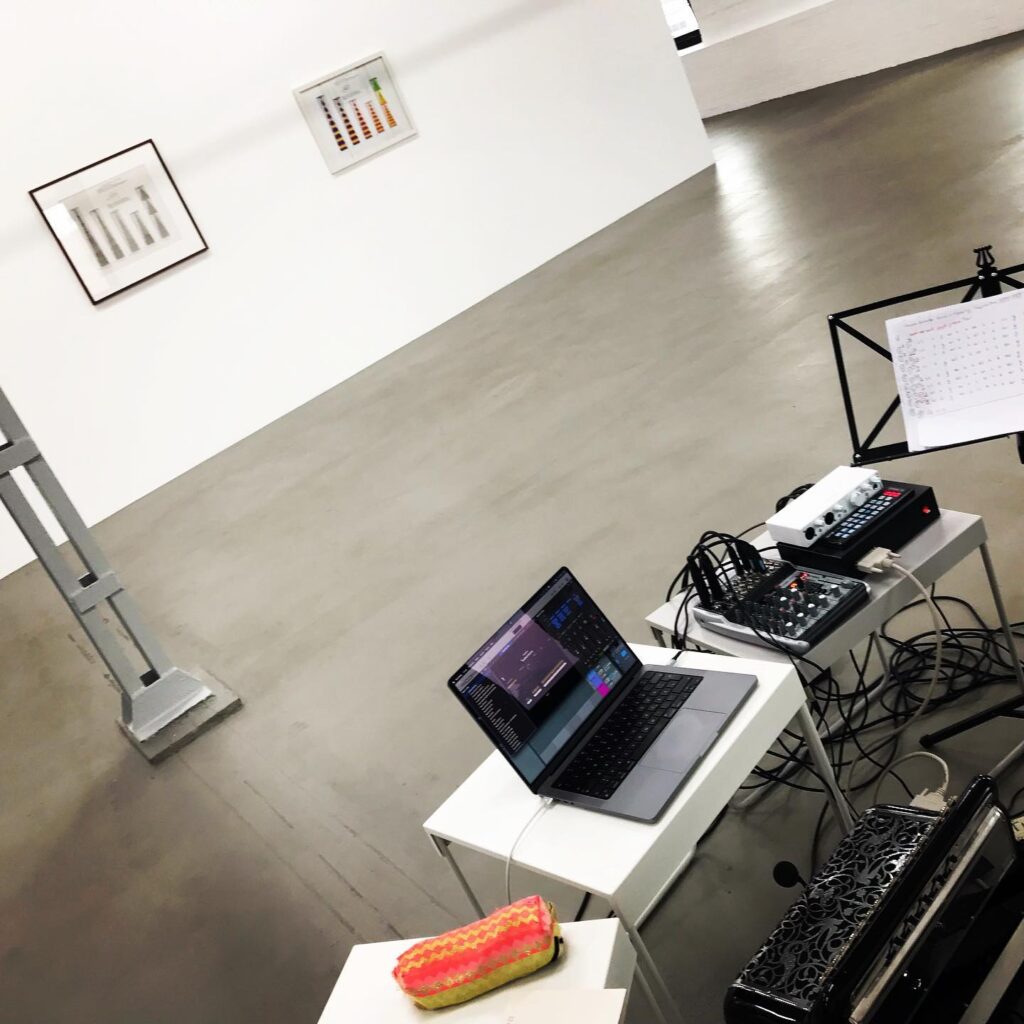
„Channa Horwitz (1932-2013) had worked on a system of drawings since the early 1960s. Derived from the format of American standard graph paper, the artist renders time using graphic entities and motion in time as associated colour schemes, thus designing structures that translate temporal-spatial relationships into drawings. Most of her drawings are based on the numerical sequence one to eight and a colour code assigned to each digit. She arranges the number sequences in ever new variations, developing them into highly complex systems. Her works resemble graphic notations demanding to be deciphered. For Horwitz, this deliberate restriction to the simplest rules did not mean a limitation in the name of creative self-censorship; it was instead an attempt to find an aesthetic language so pure and untouched by the significations of the world that it could reproduce the passage of time with approximate precision. “If I wanted to experience freedom,” Horwitz said in a conversation with Chris Kraus in 2005, “I needed to reduce all of my choices down to the least amount.
Since the late 1960s, Horwitz has also used a series of drawings, which she called Sonakinatographies—a compound of the Greek words for “sound”, “motion” and “notation”—as choreographic source material for performances. Her pieces stretch the genre boundaries between dance, performance and visual art. Here, three works from the complex of Sonakinatographies are on view: Sonakinatography XI Variation II (1981), Sonakinatography Composition XXII Number 2 (1981) and Sonakinatography Composition XXIII (2002). From 1968 until shortly before her death, the artist had worked on countless variations of the 23 different compositions in the series. Each of these drawings can be interpreted musically or choreographically and enacted as a concert, performance or spatial installation. During the opening of the exhibition, the sound artist and accordionist Anja Kreysing will perform an interpretation of the works; she will use her computerized accordion to play the scores.“
